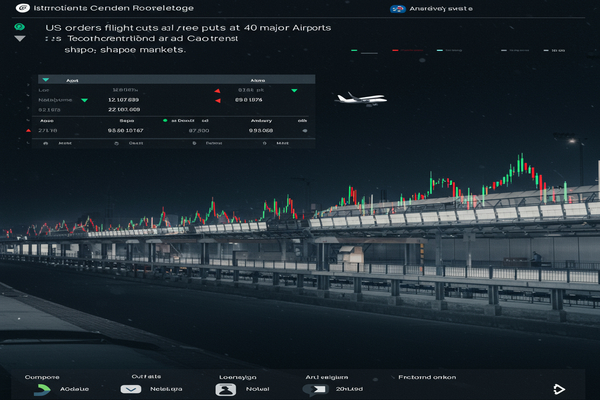
Investors are being presented with a study in contrasts: eye-catching yields and decisive earnings beats on one side, and concentrated geographic exposure, valuation questions and worries about payout sustainability on the other. Recent company-level updates and analyst activity highlight that headline numbers — a 12% yield here, a 100% revenue surge there — are only the start of the story. The critical work for long-term investors is separating transient performance from durable cash flows and identifying when a premium is justified versus when it masks risk.
Market pulse: yields, beats and maintenance of conviction
Take the yield story that has grabbed attention this week: Arbor Realty Trust is offering a 12% dividend yield on its securities while reporting pressure tied to Texas rent trends. A yield that high will naturally prompt questions about distribution safety. In some corners of the market, that headline number is treated as an opportunity; elsewhere it’s treated as a warning sign that underlying operating fundamentals could be weakening. The prudent reaction is to ask how well earnings and cash flow cover distributions, and whether asset quality or regional rental conditions will force a cut.
Contrast that with the more sanguine narrative at larger insurers and capital managers where earnings season produced a mix of strong results and defensive analyst commentary. Allstate’s third quarter provided tangible evidence of earnings momentum: revenue of $17.26 billion and a non-GAAP profit of $11.17 per share. The company reported net income of $3.75 billion and GAAP EPS of $13.95. On the surprise front, Allstate delivered an earnings beat of +36.22% while missing revenue expectations by -2.02% — a reminder that headline profitability can outshine top-line softness.
Analyst houses are largely playing it steady. Keefe, Bruyette & Woods, Evercore ISI and other boutiques have maintained recommendations for names such as Apollo Global Management and Unum Group, while banks like JP Morgan are keeping Aflac at Neutral. The message from the sell-side in recent sessions: where fundamentals support distribution and fee generation, convictions remain; where concentrated risks exist — notably geographic or currency exposure — the tone is more cautious.
Dividend pressures and concentrated risk: what investors must ask
High nominal yields can be alluring but deserve forensic scrutiny. Several themes repeat across company updates. First, concentrated geographic exposure raises distinct risks. Aflac’s heavy exposure to Japan has drawn scrutiny because foreign exchange volatility and demographic trends there can meaningfully alter premium growth and earnings trajectories. That dynamic has prompted note pieces questioning whether Aflac’s premium valuation is justified given those risks.
Second, payout coverage and the business model matter. Business development companies such as Ares Capital have been singled out for solid third-quarter results, with commentary emphasizing “strong dividend coverage and stable returns.” That’s the profile investors seek when chasing yield: distribution support from recurring operating income rather than one-offs.
Third, preferred securities and mispricing opportunities are drawing attention. Western Alliance’s preferred shares were highlighted as potentially mispriced relative to underlying risk, a situation that can create attractive entry points for investors who are comfortable with issuer-specific risks and event-driven repricing.
At the other end of the spectrum, some high-yield propositions carry additional balance-sheet or market-concentration questions. Main Street Capital, for example, was flagged not for the attractiveness of its dividend alone but for the valuation premium investors have assigned to it, which could magnify downside if distribution prospects wobble.
Earnings as a sorting mechanism: growth spikes, strategic deals and the message for portfolios
Earnings reports and strategic moves are providing further clarity on winners and laggards. Technology-enabled financial services names offered divergent narratives: Robinhood posted a 100% revenue jump in the quarter, a powerful sign that user engagement and monetization can still re-accelerate. Yet analysts caution that high valuations may cap further upside even in the presence of rapid top-line growth. Lemonade’s market reaction — a 33% jump following a strong quarter — underscores how investors will reward demonstrable improvement, but it also shows how short-term moves can overstate sustainable value unless margins and retention metrics continue to improve.
M&A and strategic acquisitions also play a role in reshaping prospects. Radian’s transformation through a $1.7 billion acquisition (Inigo) was cited as a key positive in recent coverage, and the company’s solid Q3 results were framed as further evidence of the deal’s potential to expand scale and product reach. These kinds of transactions can create optionality and earnings leverage, but they also require integration execution — another source of risk if markets recalibrate expectations.
Other results that matter: several firms across the segment published slide decks and hosted calls — American Financial Group, Jackson Financial, Radian, Voya and others — supplying granular detail that investors can use to test assumptions. The common thread in many of those calls: managements are emphasizing capital allocation discipline, selective deployment of capital and continued attention to underwriting and fee margins.
For investors, the lesson is practical. High yields demand verification: confirm distribution coverage, stress-test balance-sheet assumptions and examine exposure to currency and regional trends. A strong earnings beat such as Allstate’s (+36.22% earnings surprise) or a dramatic revenue acceleration like Robinhood’s (100%) can shift the risk/reward calculus, but valuation still matters. Where businesses show durable free cash flow and disciplined capital allocation, a premium is warranted. Where valuations outpace demonstrable coverage or where exposure is concentrated, the payout can be more fragile than it appears.
Finally, analyst behavior offers a behavioral read on the market: maintenance of ratings across names such as Apollo, Progressive, and Unum signals that most firms are not changing base-case views at scale, even as they flag idiosyncratic risks. That stability can be reassuring — provided investors do their own work and don’t treat yields or single-quarter beats as substitutes for cash-flow durability.
In short, today’s environment rewards granular due diligence. The best opportunities will be those where headline yields and headlines beats are backed by clear, repeatable cash generation and conservative capital allocation. Where those elements are missing, high yields or big quarterly pops can quickly reverse once the market re-prices risk.








